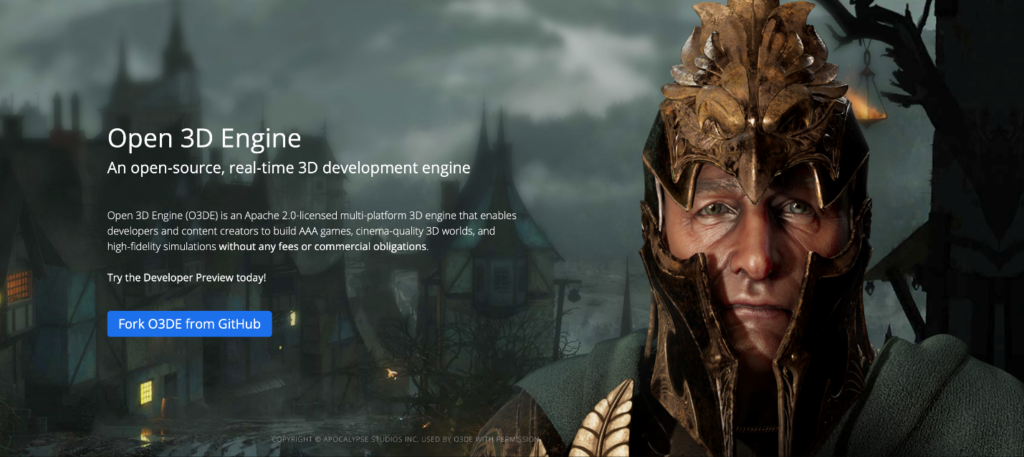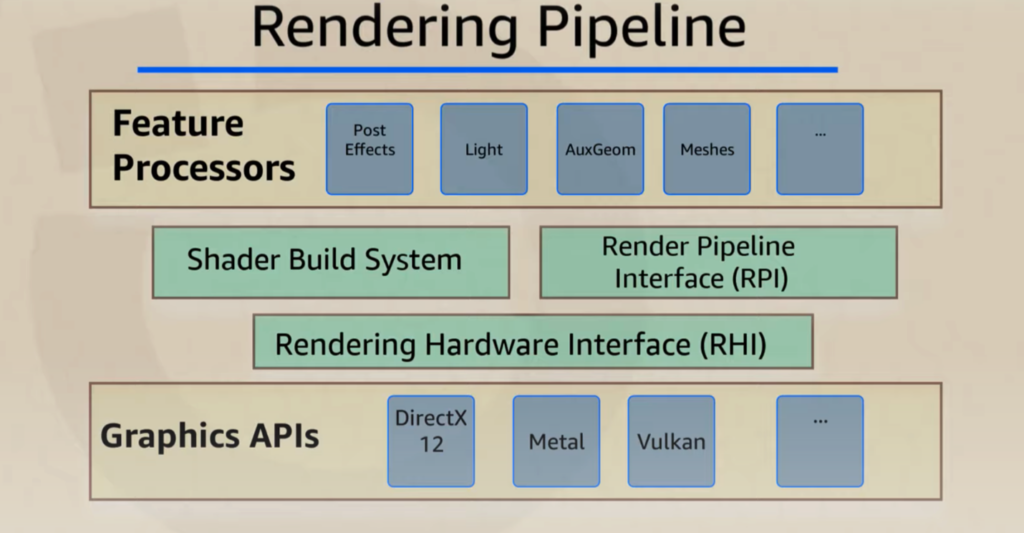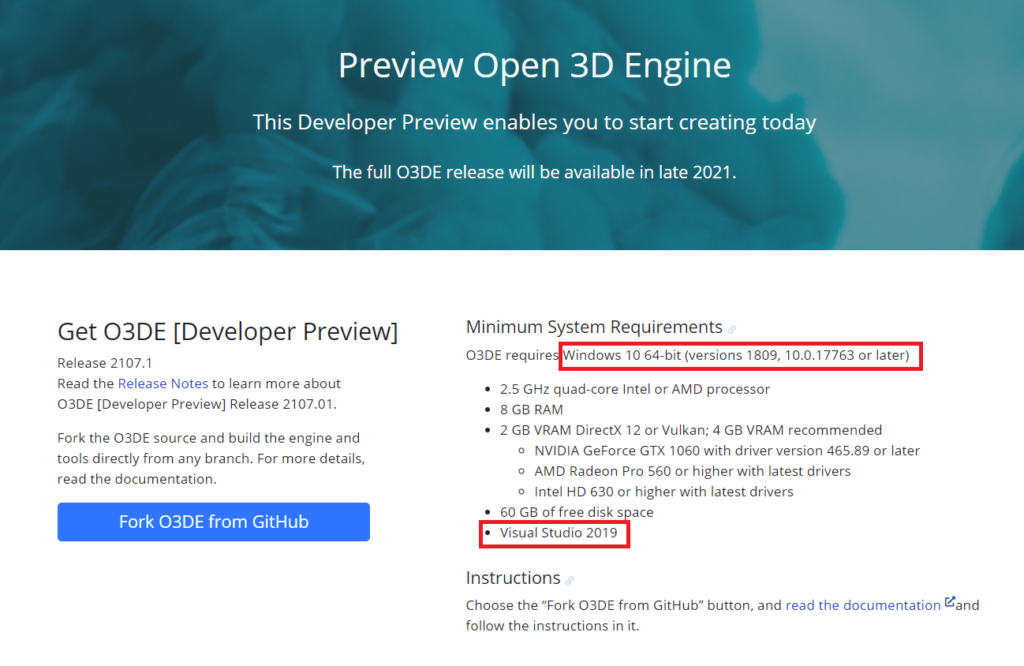New Open 3D Foundation is launching with over 20 founding members, including Adobe, AWS, Huawei, Niantic, and Red Hat, to accelerate developer collaboration on 3D engine development for AAA games and high-fidelity simulations.
By Wanda Meloni

The Linux Foundation has announced the Open 3D Foundation, along with Amazon, who is seeding the foundation with the Open 3D Engine (O3DE).
As described by Amazon:
“O3DE is a AAA-capable, cross-platform open source game engine. As part of an open source community, O3DE can expand 3D development for games and simulations by providing all the tools that developers need to bring their real-time 3D environments to life. This engine is available under an Apache 2.0 license, so anyone can build and retain their intellectual property, and choose to contribute back to the project.”
“We invested over a year to recruit partners with the right mix of resources, expertise, and above all, motivation to foster a self-sustaining community. We partnered with Linux Foundation as our trusted expert open-source organizational home because it stands as one of the best on the planet at managing large open-source projects. The Linux Foundation can provide the level of expert management demanded by such a large open-source effort. We are thrilled for the backing of a range of industry participants.”
The complete list of companies participating in the O3D Foundation includes: Accelbyte, Adobe, Apocalypse Studios, Audiokinetic, Backtrace.io, Carbonated, Futurewei, GAMEPOCH, Genvid Technologies, Hadean, Huawei, HERE Technologies, Intel, International Game Developers Association, Kythera AI, Niantic, Open Robotics, PopcornFX, Red Hat, Rochester Institute of Technology, SideFX, Tafi, TLM Partners, and Wargaming.
Designed to be modular, O3DE allows developers to replace the graphics renderer, audio subsystem, editor, language support, network stack, physics system, and other libraries entirely without affecting other libraries. The core engine modules and any add-ons or plugins are collectively known as “Gems.” Developers can slim down their project by bringing in any of the 30+ features and tools, instead of everything plus the kitchen sink. They can also implement these features and tools as independent libraries. If a developer already has an engine and wants to reduce technical debt or update their code, they can easily choose their desired features from the open-source project to implement into their own tech stacks.
Built more like an SDK, the engine can be provided in a pre-compiled form for engine modules and Gems. Likewise, precompiled libraries or Gems do not need to be recompiled when the project changes. And, when new engine versions are released, developers can update the core Gems and will only need to resolve compile issues in the project code itself.
Read more about the future of the Lumberyard Build System in the blog.
Another significant change to the core engine is the Atom Renderer, which is delivered as a Gem. The Atom Renderer supports multiple platforms by providing a physically based renderer (PBR) that is ACES color-space-compliant and fully supports ray tracing on Vulkan, Metal (in development), and DirectX 12. Atom ships with Global Illumination (GI) and forward+ rendering out of the box, with support for deferred rendering pipelines.
Similar to O3DE, the Atom renderer is modular, scriptable, and data-driven. There is also a new shading language that has been built, called AZSL. This language utilizes Atom’s data-driven capabilities so developers can innovate as new hardware interfaces emerge. The Atom renderer is also open source and free.

Learn more about the Atom Renderer here.
Included within O3DE is a new networking stack featuring a flexible data-driven model supporting TCP/UDP with a low latency transport layer abstracted behind a simple API. The stack supports encryption and compression with a built-in simulator for latency, jitter, reordering, and loss. To ensure the lowest latency and highest fidelity, it supports entity replication via unordered, unreliable data replication and local prediction latency compensation with backward reconciliation for server authority, as well as detachable player behaviors supporting automated desync detection and correction.
To ensure that developers can use different server models, the stack supports player-hosted and dedicated server models out of the box.
O3DE is said to be lighter and faster than Lumberyard. Amazon created new math libraries that leverage modern CPUs and current SIMD instruction sets. The results are faster frame rates, improved platform support (especially on ARM devices), higher accuracy, and increased compute resources available for animation, special effects, and gameplay.
There are also additional cloud capabilities with support for Amazon Kinesis, AWS Lambda, Amazon Cognito, Amazon CloudWatch, AWS CloudTrail, AWS IAM, Amazon GameLift, and an updated AWS C++ SDK. These deep integrations into cloud services allow developers to deliver games and simulations featuring customizable support, innovate rapidly, and keep both existing and new players coming back for more. O3DE’s cloud capabilities will grow even further over time as partners and the community continue adding more options beyond AWS. As well, AWS will continue building even more cloud features and support for additional file formats spanning a range of new use cases.
To accelerate customization, Amazon extended the UI tooling with Python extensions that access code interfaces and Qt to create custom editor components. They have updated asset creation with new pre- and post-step Python bindings to allow in-flight processing and custom behaviors for FBX and material processing. These bindings enable technical artists to write Python scripts that may split, assign, or rehome assets, as well as create custom materials from any input source.
Open 3D Engine is currently available in developer preview and there should be a production-ready version available later this year. Amazon will be working with the Linux Foundation, the O3DF partners, and colleges to help drive interest in the new annual hybrid event O3DEcon, to take place on October 11–12 in Los Angeles and virtually. Additionally, there will be support, other industry shows, and hackathons worldwide.
What do we think?
At first glance, the idea of Lumberyard going open source is an interesting prospect. Unfortunately, Lumberyard itself has been plagued with issues that may make it difficult to reskin.
Based on Crytek’s CryEngine, Amazon paid Crytek an estimated $50–$70 million for the licensing rights back in 2016. Amazon then spent hundreds of millions of dollars more to set up their Amazon Game Studios, with multiple locations in San Diego, Orange County, and Seattle. Then by 2019 Amazon announced it was shuttering the studios, canceling the games in development, and laying off the majority of the game studio workforce.
In an article published by the Wall Street Journal back in June 2019, a number of the ex-Amazon Game Studio developers spoke anonymously that they specifically felt Lumberyard was responsible for the shuttering of the game studios.
As of late 2020, Amazon stated that nearly 70% of the original Lumberyard code had been updated. So spinning the engine now as an open source alternative is a brilliant move on Amazon’s part, as a means to leverage the company’s Amazon Web Services (AWS). Back in April, the AWS group grew their revenue by 32% compared to the same period last year, which was $13.5 billion for the quarter. AWS now represents 12% of the company’s total revenue and is the reason why the AWS group is viewed as a critical component to Amazon’s overall expansion plans. Specifically, in the first quarter of 2021, AWS accounted for $4.16 billion, or 47% of Amazon’s total operating income. Anything that builds on the company’s web services is viewed as a strategic alignment, even if it means dusting off and offering up an aging game engine for free.
However, if you dig a little beyond the O3DE press release, there are still some red flags that concern us. Most notably, the preview download reference specifies O3DE currently only supports Windows and requires Windows 10 64-bit and Visual Studio 2019 to run, making this not a Linux-based open-source game engine, at least not in its present configuration:

The majority of the member companies supporting the O3D Foundation include a solid list of tech companies that includes Accelbyte, Adobe, SideFX, Genvid, Intel, Red Hat, and Audiokinetic that are just providing support for their tools.
The main game developers include:
- Apocalypse Studios: although the CEO says there is no impact on their decision to support O3DE, his previous company Silicon Knights was in a lengthy public court battle against Epic and lost.
- Wargaming: They are publishing third-party mobile games and are looking at it as an opportunity to support an alternative engine that they won’t need to pay royalties to.
- Niantic: Having reached a lifetime revenue of $5 billion, the company’s biggest game, Pokemon Go uses Unity and it is doubtful they would risk changing anything there. However, they too announced they are working to build out a platform so developers can publish to their AR platform, making it an alternative for developers as they look to build up their own platform.
We have concerns that the larger AAA companies, who require secure technology, will not be willing to make the move to an open-source game engine. Additionally, it feels like a stretch for indies who require much-needed add-ons support like documentation, an asset store, training, etc., to jump on board early.
A few years ago here at M2 Insights, we surveyed developers on a number of topics including what dictates their choice of a game engine and following are the criteria in order of importance. Ease of use was most important but then some of the additional features include things like documentation, community support, training and tutorials, support of multiple platforms. These are the fundamentals necessary for sustainable developer engagement.

We are currently working on our upcoming Game Engine Report that will be published shortly. Aside from the latest projections, we will also be addressing vertical markets for realtime and interactive applications. For additional information please contact us at: [email protected].
Wanda Meloni is the principal and founder of M2 Insights. The firm tracks market and technology trends and provides sector-specific business intelligence that is commercially actionable.





